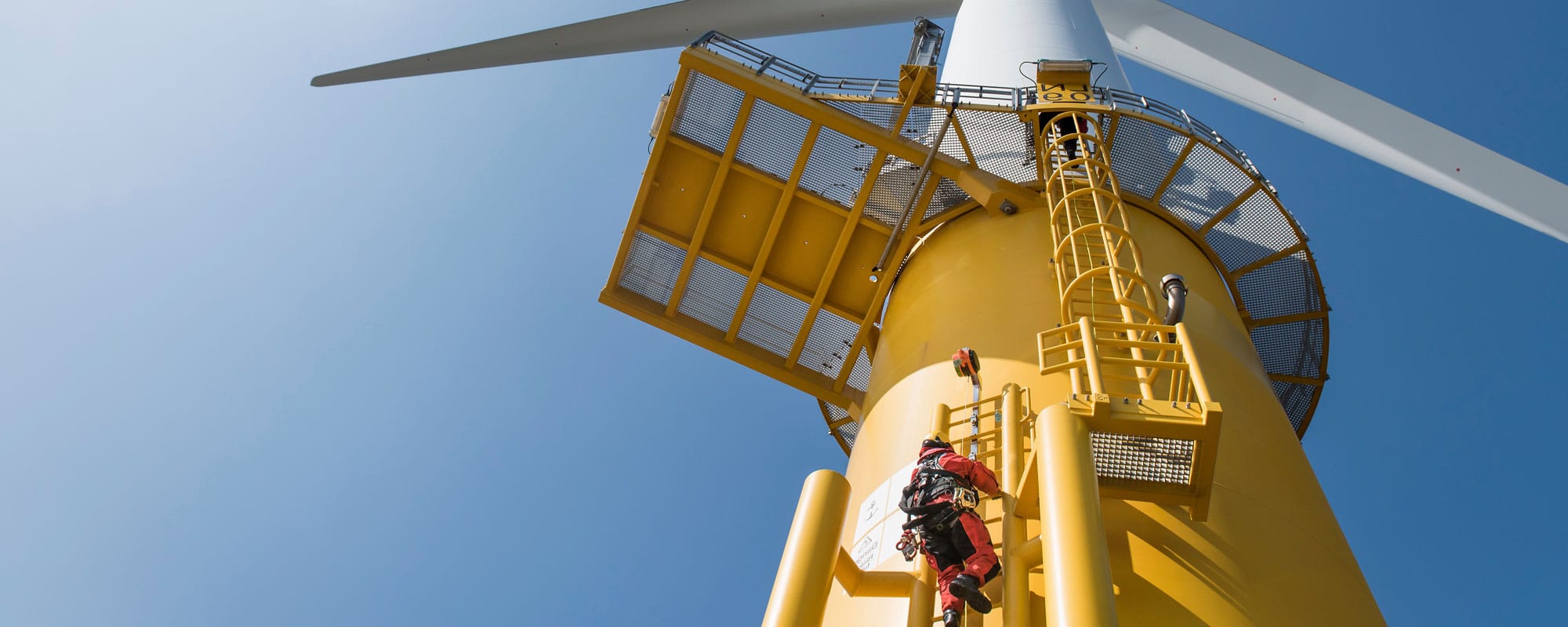Sustainability
Wind Techs Play a Critical Role Keeping the Power On
2020 and 2021 saw record-breaking wind turbine installations in the U.S., which increased capacity by 30%. Today, the industry supports 120,000+ jobs — from turbine designers, manufacturers and installers to those climbing towers to perform maintenance and repairs.
As business manager for H&N Wind, part of the Timken Power Systems service group, Nathan Glessner manages teams of technicians who go to great heights — literally — to keep the lights on for communities across America.
Mechanical skills pared with deep, Timken-wide support.
Glessner started at H&N Electric before its entry into the wind business. “I graduated from a high school across the river and became a welder, so I started in our fabrication shop,” he says.
In 2005, he was the first H&N tech to climb a wind tower. “It was in Oregon,” he says. “Two techs from Japan flew to the U.S. trying to solve a problem. They didn’t have the right tools, so they found us.”
“Wind energy is increasingly critical for the power grid, which means the work we do is also critical.”
Nathan Glessner
Business Manager, H&N Wind
Today, growing the H&N team is Glessner’s biggest challenge. “Wind techs are in high demand,” he says. “It’s a great job for a young person looking for freedom and adventure. You get to know people all around the country — and it’s important work.”
He’s constantly looking for trainable candidates and has been known to hand his card to promising young talent wherever he meets them. “You can buy forklifts and lathes and buildings and such, but hard workers are hard to find,” he says.
Some 3MW turbines tower 35 stories over the landscape. A lot happens up there, says Glessner, but with the right attitude and some mechanical ability, you can get up to speed quickly. “Bearing changes, electrical upgrades, torquing, tensioning, oil changes — that’s the day-in, day-out of the work we do,” he says.
H&N has all of Timken’s resources and knowledge behind it, including gear box, generator and motor repair, as well as bearing and torque limiter expertise. All that can come into play during maintenance calls and emergencies.
“When a customer has a tower down, the situation is always urgent,” he says. “Wind farms contract with electric companies to keep a certain percentage of their turbines available at all times. If a tower goes down, they need you yesterday.”
Playing it safe — and enjoying the scenery
A wind tech’s day starts with a morning tailgate meeting to go over the agenda, safety protocols, and any possible hazards. High winds or lightning storms can change the plan quickly.
Before climbing, a harness inspection is mandatory. Most turbines have a motor that pulls the cable up, taking 80 to 100 pounds of weight off to help you climb. Tools, parts, water, food and other necessities go up-tower with outside hoists or an inside lift system.
Wind farms get built in places where the wind is strong and reliable: coastal areas, rounded hills, open plains and mountain crevices. That doesn’t usually equate to navigable terrain or moderate weather, but the variety and adventure can’t be beat. “I’ve been all over the world,” says Glessner. “For most of our work, we’re safely inside the fiberglass nacelle, but you obviously pop the lid every time, just to check out the view.”

No longer a “transitional” power source
On March 29, 2022, wind energy in the United States reached a major milestone. For the first time, U.S. wind farms generated in excess of 2,000 GWh — enough electricity to power more than two million average homes for a month. In that 24-hour period, wind beat out every power source except natural gas.
“Wind energy is increasingly critical for the power grid,” says Glessner. “Which means the work we do is also critical.”
Service engineers and technicians are critical to wind energy growth all over the world. Read how Andy Zhou and his team solve wind energy challenges in China.
Published: 2022/10/12

